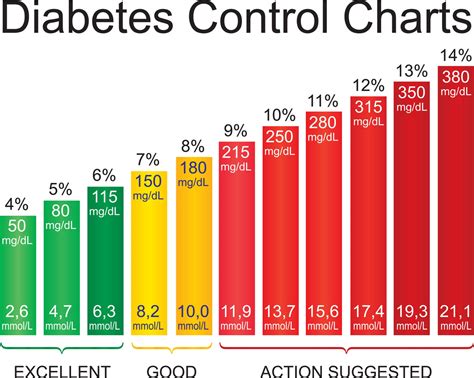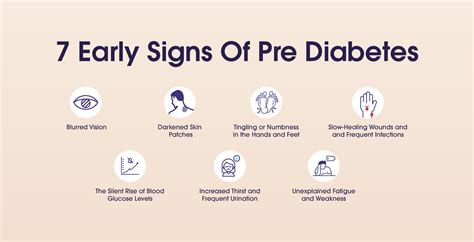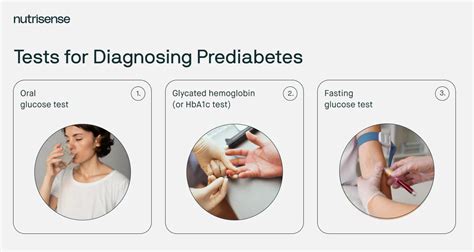Intro
Pre-diabetes is a condition where an individual's blood sugar levels are higher than normal, but not high enough to be classified as diabetes. This condition is often a precursor to type 2 diabetes, and it is essential to manage and regulate blood sugar levels to prevent the development of the disease. Pre-diabetes is characterized by insulin resistance, where the body's cells become less responsive to insulin, a hormone produced by the pancreas that regulates blood sugar levels.
The importance of managing pre-diabetes cannot be overstated, as it can help prevent the development of type 2 diabetes and its associated complications, such as heart disease, kidney damage, and nerve damage. Additionally, pre-diabetes can also increase the risk of cardiovascular disease, stroke, and other health problems. Therefore, it is crucial to understand the causes, symptoms, and treatment options for pre-diabetes to take proactive steps in managing the condition.
Pre-diabetes is often asymptomatic, meaning that individuals may not exhibit any noticeable symptoms. However, some common signs of pre-diabetes include increased thirst and urination, fatigue, blurred vision, and slow healing of cuts and wounds. If left untreated, pre-diabetes can progress to type 2 diabetes, which can lead to more severe complications. Therefore, it is essential to be aware of the risk factors and take proactive steps to manage blood sugar levels.
Understanding Blood Sugar Levels

Blood sugar levels, also known as blood glucose levels, refer to the amount of glucose present in the blood. Glucose is a type of sugar that is obtained from the food we eat and is used by the body's cells for energy. The body regulates blood sugar levels through the production of insulin and glucagon, two hormones produced by the pancreas. Insulin helps to lower blood sugar levels by facilitating the uptake of glucose by the body's cells, while glucagon helps to raise blood sugar levels by stimulating the release of glucose stored in the liver.
In individuals with pre-diabetes, the body's cells become less responsive to insulin, leading to high blood sugar levels. This can be due to a combination of genetic and lifestyle factors, such as a family history of diabetes, obesity, physical inactivity, and a diet high in sugar and refined carbohydrates. Managing blood sugar levels is crucial in preventing the development of type 2 diabetes and its associated complications.
Normal Blood Sugar Levels
Normal blood sugar levels vary throughout the day, depending on factors such as the time of day, the type of food eaten, and the individual's level of physical activity. Fasting blood sugar levels, which are measured after an overnight fast, are typically between 70 and 100 mg/dL. Postprandial blood sugar levels, which are measured after eating, are typically between 100 and 140 mg/dL.Causes and Risk Factors of Pre-Diabetes

Pre-diabetes is caused by a combination of genetic and lifestyle factors. Some of the common causes and risk factors of pre-diabetes include:
- Family history of diabetes
- Obesity, particularly around the abdominal area
- Physical inactivity
- Diet high in sugar and refined carbohydrates
- Age, with risk increasing after the age of 45
- Ethnicity, with certain ethnic groups such as African Americans, Hispanics, and Native Americans being at higher risk
- History of gestational diabetes or delivering a baby over 4 kg
- Polycystic ovary syndrome (PCOS)
- Sleep apnea
- Certain medications, such as steroids and certain psychiatric medications
It is essential to be aware of these risk factors and take proactive steps to manage blood sugar levels. This can include maintaining a healthy weight, engaging in regular physical activity, and following a balanced diet that is low in sugar and refined carbohydrates.
Lifestyle Changes for Managing Pre-Diabetes
Lifestyle changes play a crucial role in managing pre-diabetes. Some of the key lifestyle changes that can help manage blood sugar levels include:- Maintaining a healthy weight through a combination of diet and exercise
- Engaging in regular physical activity, such as brisk walking, cycling, or swimming
- Following a balanced diet that is low in sugar and refined carbohydrates and high in fiber and protein
- Getting enough sleep, aiming for 7-8 hours per night
- Managing stress through techniques such as meditation, yoga, or deep breathing exercises
- Quitting smoking and limiting alcohol consumption
Diagnosing Pre-Diabetes

Pre-diabetes is typically diagnosed through a combination of physical examination, medical history, and laboratory tests. Some of the common tests used to diagnose pre-diabetes include:
- Fasting plasma glucose (FPG) test, which measures blood sugar levels after an overnight fast
- Oral glucose tolerance test (OGTT), which measures blood sugar levels after consuming a sugary drink
- Hemoglobin A1c (HbA1c) test, which measures average blood sugar levels over the past 2-3 months
The American Diabetes Association recommends that adults over the age of 45 be screened for pre-diabetes every three years. Individuals who are at high risk of developing pre-diabetes, such as those with a family history of diabetes or who are overweight or obese, may need to be screened more frequently.
Treatment Options for Pre-Diabetes
Treatment for pre-diabetes typically involves a combination of lifestyle changes and medication. Some of the common treatment options for pre-diabetes include:- Metformin, a medication that helps to lower blood sugar levels by increasing insulin sensitivity
- Lifestyle changes, such as maintaining a healthy weight, engaging in regular physical activity, and following a balanced diet
- Monitoring blood sugar levels regularly to track progress and make adjustments to treatment as needed
It is essential to work with a healthcare provider to develop a personalized treatment plan that takes into account individual needs and health status.
Complications of Pre-Diabetes

If left untreated, pre-diabetes can progress to type 2 diabetes, which can lead to a range of complications, including:
- Heart disease and stroke
- Kidney damage and kidney failure
- Nerve damage and neuropathy
- Blindness and vision loss
- Foot damage and amputations
- Cognitive decline and dementia
It is essential to manage blood sugar levels and prevent the development of type 2 diabetes to avoid these complications.
Preventing Pre-Diabetes
Preventing pre-diabetes requires a combination of lifestyle changes and early intervention. Some of the key strategies for preventing pre-diabetes include:- Maintaining a healthy weight through a combination of diet and exercise
- Engaging in regular physical activity, such as brisk walking, cycling, or swimming
- Following a balanced diet that is low in sugar and refined carbohydrates and high in fiber and protein
- Getting enough sleep, aiming for 7-8 hours per night
- Managing stress through techniques such as meditation, yoga, or deep breathing exercises
- Quitting smoking and limiting alcohol consumption
By taking proactive steps to manage blood sugar levels and prevent the development of pre-diabetes, individuals can reduce their risk of developing type 2 diabetes and its associated complications.
Conclusion and Next Steps

In conclusion, pre-diabetes is a serious health condition that requires prompt attention and management. By understanding the causes, symptoms, and treatment options for pre-diabetes, individuals can take proactive steps to manage blood sugar levels and prevent the development of type 2 diabetes. It is essential to work with a healthcare provider to develop a personalized treatment plan that takes into account individual needs and health status.
We invite you to share your thoughts and experiences with pre-diabetes in the comments section below. If you have any questions or concerns, please do not hesitate to reach out to us. Additionally, we encourage you to share this article with friends and family members who may be at risk of developing pre-diabetes.
What are the symptoms of pre-diabetes?
+Pre-diabetes is often asymptomatic, but some common signs include increased thirst and urination, fatigue, blurred vision, and slow healing of cuts and wounds.
How is pre-diabetes diagnosed?
+Pre-diabetes is typically diagnosed through a combination of physical examination, medical history, and laboratory tests, including fasting plasma glucose (FPG) test, oral glucose tolerance test (OGTT), and hemoglobin A1c (HbA1c) test.
Can pre-diabetes be reversed?
+Yes, pre-diabetes can be reversed through a combination of lifestyle changes, including maintaining a healthy weight, engaging in regular physical activity, and following a balanced diet.
